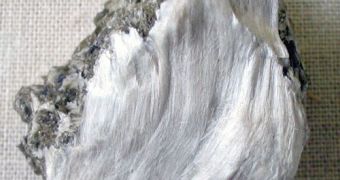In an interesting new study, researchers demonstrated that animal models exposed to asbestos-rich dust were far more likely to suffer from genetic somatic mutations than those who were only exposed to regular dust.
Past studies have drawn attention to the dangers posed by asbestos years ago. The works have shown that the fibers can easily make their way into the lungs via inhalation, destroying the tissue, and potentially causing death.
The material also produces undesired effects after it is consumed in foods. Scientists have already shown that it can produce certain types of cancer, and that an increased rate of genetic mutations is also common in those exposed to the compound.
In order to test the link between asbestos exposure and genetic mutations, a team of researchers from the University of Haifa in Oranim decided to analyze the genes of mice that were known to live in an asbestos-rich environment.
For control, the team also carried out the same type of investigations on mice that did not live in such areas. The experiments found significantly more somatic mutations in the former group, experts say.
UH Department of Biology experts Dr. Rachel Ben-Shlomo and Dr. Uri Shanas explain that “this study clearly indicates that there is a link between the higher levels of asbestos in the environment and the frequency of genetic somatic mutations in the mammals.”
“These findings teach us that the pollutive, mutagenic asbestos increases somatic mutational frequency, which can in turn heighten the chances of developing cancerous growths,” they go on to say.
The team now believes that more should be conducted on this issue, but this time on humans. The material is widely used in a variety of applications, and many people work with it every single day.
In some cases, asbestos causes a disease called Mesothelioma (malignant mesothelioma). This is a very rare form of cancer, which is caused directly by long-term, daily exposure to the mineral.
This type of cancer develops from the protective lining that covers many internal organs, including the lungs. The condition is not likely to be triggered by a brief, high-intensity exposure to asbestos.

 14 DAY TRIAL //
14 DAY TRIAL //